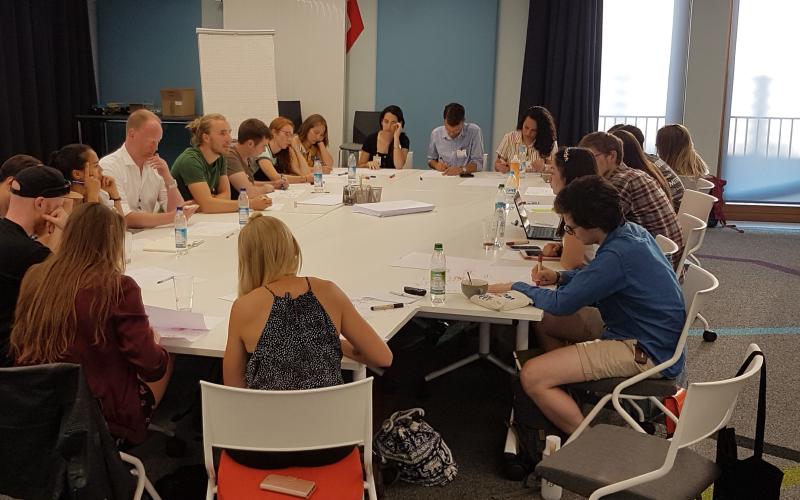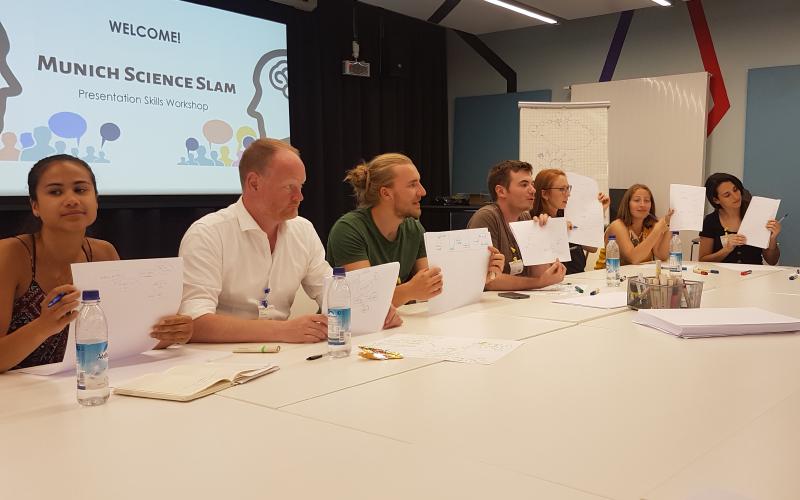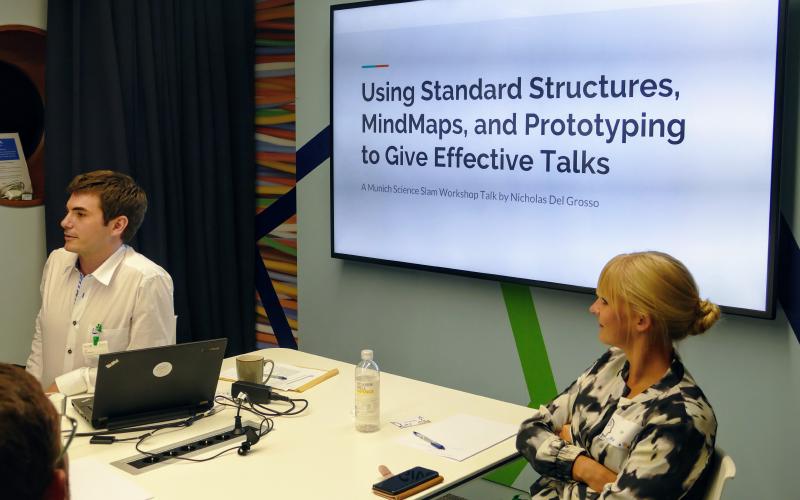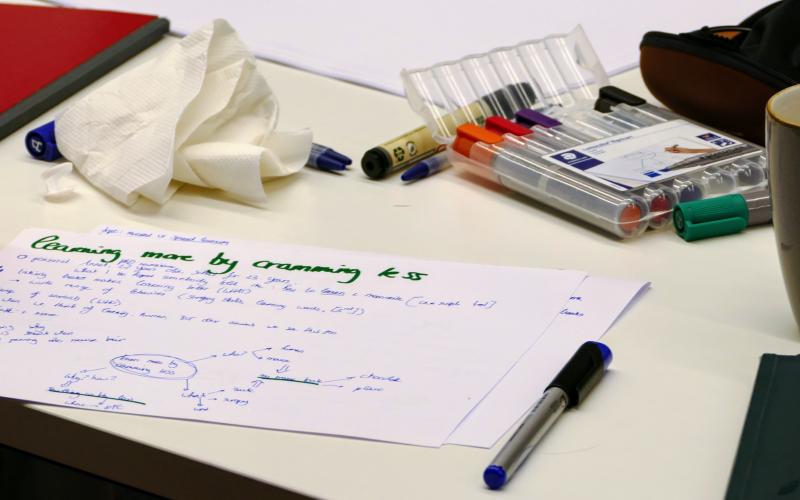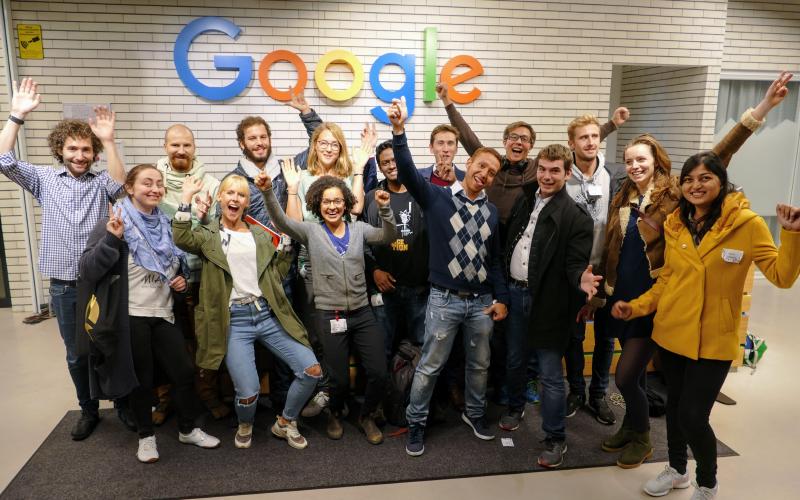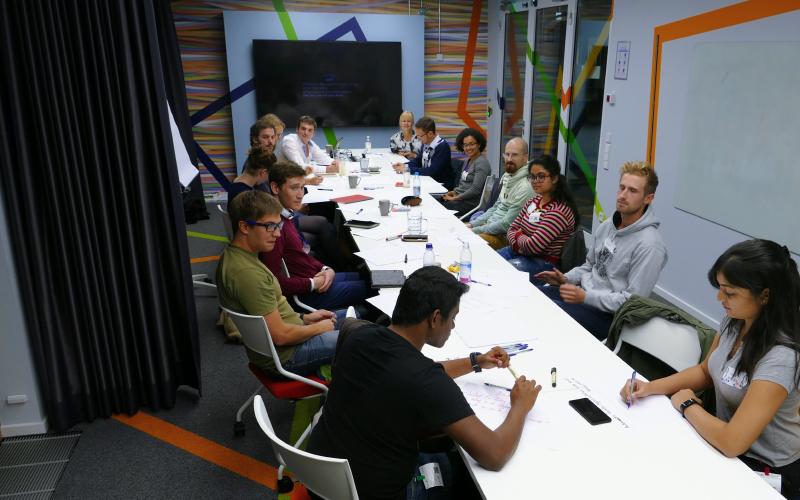Presentation Skills Workshop
Applying Design Thinking to Scientific Talk Preparation
Talks are complex knowledge delivery products that are:
- Expensive: a talk can take quite a bit of time to prepare, organize, and attend.
- Complex: they involve communicating several ideas in a limited time span, in contexts that are foreign to much of an audience, with a mixture of logical, visual, and audio cues in a live setting.
- Valuable: one great presentation can have a profound effect on the outlook and worldview of the listener, get feedback to the speaker on their ideas and work, and help focus the speaker’s thoughts–all at the same time!
In our workshop, we use a prototyping strategy; using lightning talk formats to rapidly iterate through talks that are concise,coherent, and creative!
I signed up for the workshop. What can I expect?
When you arrive, try and bring a few ideas about what topic you’d like to discuss. From the very beginning, you’ll be testing them out on the other participants and seeing what feels right.
For most of the workshop, we’ll take turns delivering 30-90 second talks, taking breaks to learn core concepts of prototyping, goal-setting, essay-writing, and flow through short lectures.
Along the way, we’ll look for both patterns and anti-patterns in science communication in order to get new insights that will help make us more effective speakers.
The whole session takes 4 hours and is quite intense! By the end of it, you’ll have given a lightning talk at least 7 times, written about your personal goals, made a mind-map, gotten to know the other participants, and left with a fully-formed 90-second talk that you can both deliver with confidence in any setting and flesh out into longer and detailed presentations.
Schedule
- (15 mins) Doors Open: welcome to the workshop! Get settled and mingle a bit as you think about which topic you’ll be building a talk around during the workshop; grab a snack and maybe wake up with a coffee!
- (30 mins) Selecting a Core Message: what will our talk be about, and what will we try to accomplish with it? We’ll rapidly test out our ideas on each other with a 60-second lightning talk. By the end of the round, we’ll each have our starting point for the workshop.
- (60 mins) Motivating the Talk: why is this a good talk? What makes it interesting, and how do you connect with it? We’ll discuss the core aspect of a good introduction and produce 60-second elevator pitches.
- (15 mins) Break Time!
- (90 mins) Building and Refining the Body: now that you’ve picked the message, it’s time to make sure you can deliver it! We’ll use mindmapping as a tool to build a 3-part essay structure comprised of powerful main points and evidence that support your take-home message. At the end, we’ll have a 90-second lightning talk that has punch and brings cohesion to your presentation!
- (45 mins) Giving Personality to the Presentation: once the core is known, all that’s left is to flesh it out. We’ll discuss some techniques for capturing the audience’s attention, giving them the background knowledge they need to follow along, and methods for giving your presentation some punch!
Detailed Workshop Content
Sharing Your Goals: Building Your Intro
Before designing a talk, the first question we all have to answer is, “Why give a Talk at all?"
- What is motivating me?
- What long-term goals am I working on, and why are they important?
- What would I like to accomplish with this presentation?
- Why should my audience engage with this presentation?
- What will my audience gain from this presentation?
These aren’t the easiest questions to answer, but once done, they lead to the creation of a Thesis (the main take-home message of the talk), and several portions of a standard introduction: The Culture, The Motivation, The Biography, and The Topic. By re-examining ourselves for each presentation, we can find new meaning in our routine work and focus on delivering a well-defined and novel direction for our presentations to go in.
Supporting Your Main Message: Building Your Body
Just having a main point isn’t enough to make an impact on your audience - after all, if they already accepted it, there really wouldn’t be much of a point in giving the talk at all!
To be convincing, your main point should be supplied with clearly-stated reasons that are, in turn, supported by evidence. Since your talk has a limited time, the reasons and evidences you select should be the strongest ones available, so that you can give them the time they need to be delivered clearly.
In this section of the workshop, we use Mind Maps to brainstorm our arguments and give them a well-defined structure. We’ll do this a few times, as often we’ll find that we need to alter our main point to focus on something else, or even change our opinion completely. Once we can clearly state this argument in a 60-second lightning talk and get some thumbs-ups from our friends, we’re ready to integrate it into a talk structure.
Once we know our main argument, we also know what topics we have to teach in our talk in order to ensure that our audience can follow everything. This gives us the final informational component of our presentation: The Background. The larger and more heterogeneous the audience, the more important it is for us to give a complete overview of the topics we present.
Putting it All Together!
All that’s left now is to put the intro, body, and conclusion together into a single package! But how do we do this that while still keeping the audience engaged plus a sense of completeness to the presentation, and without straining their memory or attention?
In this section of the workshop, we’ll focus on the nested nature of communication in order to layer the sections of our talk into an essay structure, showing why this structure has its strengths. Using this structure, we’ll build a 90-second lightning talk that we can deliver with confidence!
Adding Creative Flavor
Who said science has to be sober? Memorable talks are not just sincere, inspiring, and persuasive - they are also entertaining! We’ll talk about where to add a sense of flow to the presentation and how to give it the personal touch. By taking inspiration from ancient story structures and literature genres, we’ll see that we can deliver the same message and arguments in a variety of formats, making our presentation accessible to everyone and leaving our audience with a positive feeling overall.
To accomplish this, we’ll take on 4 different techniques to give the talk that much-needed “oomph”:
- Connecting Sentences: between each section, we’ll revisit our main point, showing our progress and charting the next point in our journey. This lends our talk a sense of Flow.
- Hooks: from the very first sentence, your presentation should orient and engage your audience in order to get everyone on the same page. Having a final “Hurrah” moment helps disengage them, as well as giving the presentation a sense of eventfulness and re-orienting the audience to the next portion of the session.
- Matching Oral Presentation with Visual Hierarchy: if you use visual aids, it will grab your audience even stronger than your words. Designing your speech and aids to complement each other will help give a smooth rhythm to your talk and keep everyone together.
- Building Expectations: by promising a given payoff, a presentation contains in itself a kind of drama, in which the audience is unsure until the end whether that payoff will be delivered. Playing with that expectation gives excitement to the talk that, when successful, lends a satisfying sense of catharsis!
